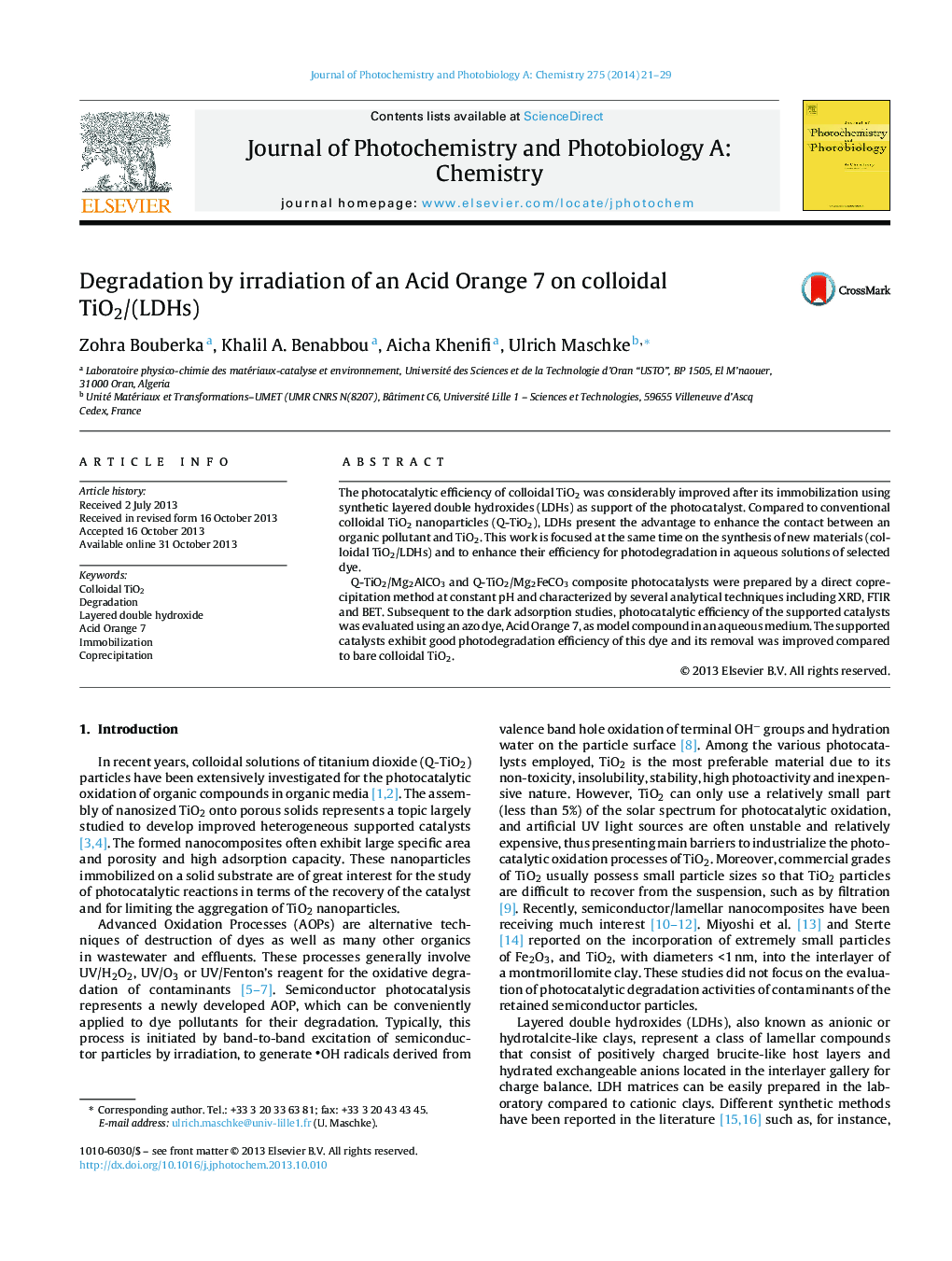| Article ID | Journal | Published Year | Pages | File Type |
|---|---|---|---|---|
| 26308 | Journal of Photochemistry and Photobiology A: Chemistry | 2014 | 9 Pages |
•Straightforward synthesis of TiO2 nanoparticles by the coprecipitation method.•Surface immobilization of colloidal TiO2 nanoparticles on Layered Double Hydroxides.•This investigation highlights modifications of the textural properties of LDHs.•Highly efficient photodegradation observed using TiO2/LDHs composites.•Improved removal of Acid Orange 7 compared to bare colloidal TiO2.
The photocatalytic efficiency of colloidal TiO2 was considerably improved after its immobilization using synthetic layered double hydroxides (LDHs) as support of the photocatalyst. Compared to conventional colloidal TiO2 nanoparticles (Q-TiO2), LDHs present the advantage to enhance the contact between an organic pollutant and TiO2. This work is focused at the same time on the synthesis of new materials (colloidal TiO2/LDHs) and to enhance their efficiency for photodegradation in aqueous solutions of selected dye.Q-TiO2/Mg2AlCO3 and Q-TiO2/Mg2FeCO3 composite photocatalysts were prepared by a direct coprecipitation method at constant pH and characterized by several analytical techniques including XRD, FTIR and BET. Subsequent to the dark adsorption studies, photocatalytic efficiency of the supported catalysts was evaluated using an azo dye, Acid Orange 7, as model compound in an aqueous medium. The supported catalysts exhibit good photodegradation efficiency of this dye and its removal was improved compared to bare colloidal TiO2.
Graphical abstractFigure optionsDownload full-size imageDownload as PowerPoint slide
